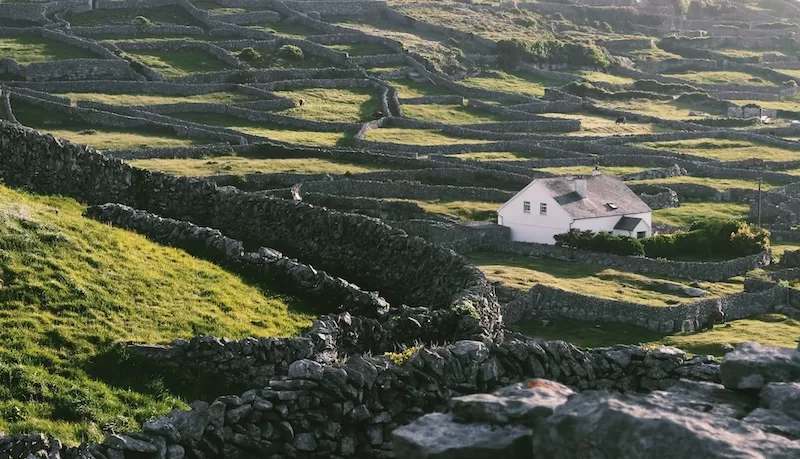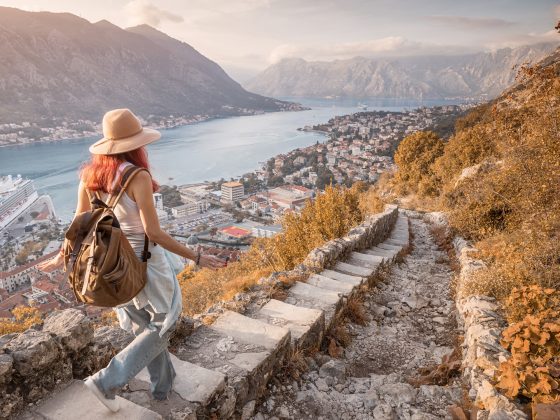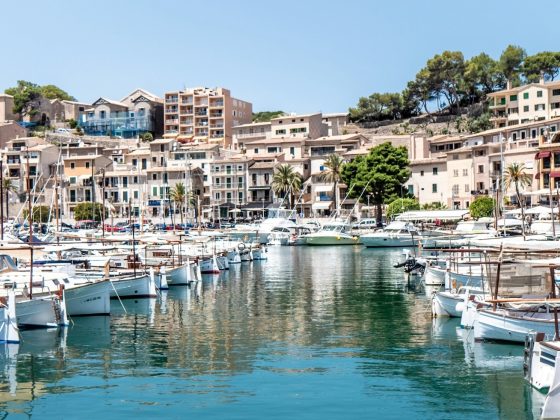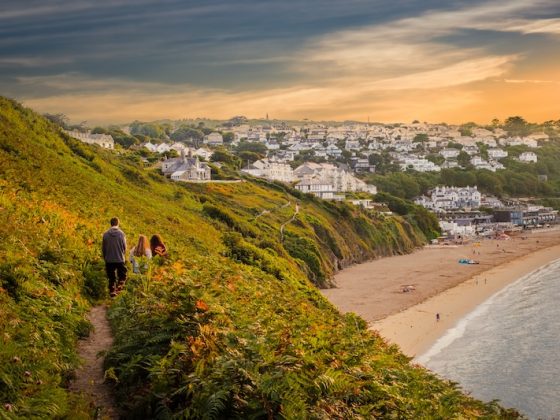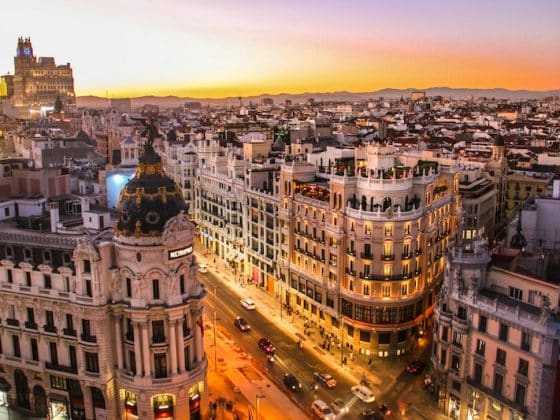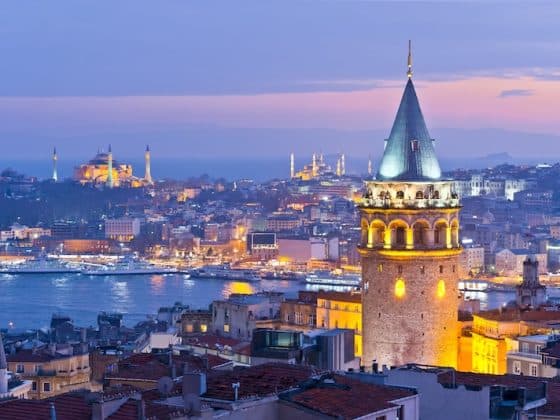Irish culture is unmistakable. The near-constant drizzle, “proper” Guinness, and enough craic to coax even the most hesitant introvert out of their shell. There’s the red-painted Temple Bar, the dramatic Cliffs of Moher, the colorful houses of Cobh, and Kilmainham’s tragic past. Ireland is a breath of fresh air—an intensely cultured place you just might want to call home. Perhaps you already have ties? If so, you’re not alone. There’s an estimated 10:1 ratio of people claiming Irish heritage abroad versus those actually living in Ireland.
As my name might suggest, I’m one of them. I was born in England but am of Irish descent (it’s pronounced “eye-lish,” like Billie Eilish). My dad’s family is from County Offaly, nestled in the boggy heart of the Republic of Ireland, and I grew up bouncing around the country visiting relatives. With two decades of Irish travel under my belt, I’ve gathered plenty of tips to send you on your way. Here are the ten things to know before moving to Ireland.
#1. It’s True About the Weather
Don’t wait until you get here to prepare for Irish weather—it’s better to come ready. Without the right gear, you’ll find yourself in a soggy and regrettable state. Pack waterproof coats and thermal base layers. If you’re living in Ireland, you’re going to get wet.
While Ireland isn’t perpetually gray, rain is never far off. The west coast is especially rainy, and even drier Dublin averages 10–13 rainy days a month year-round. A waterproof coat (and maybe waterproof pants) is non-negotiable. Last year, I hiked the 165-kilometer Famine Trail through Ireland’s bog counties. In six days in mid-August, it rained on at least four.
The good news? Temperatures do fluctuate. Winters hover around 35–37°F (2–3°C), and you might see highs of 66°F (19°C) in July and August. Don’t expect sunbathing weather, but summer can bring a few glorious “t-shirt days.”

Read more like this: Does Extreme Weather Pose a Threat to Travel?
#2. You’ll Become an Extrovert After Moving to Ireland
The stereotype of the outgoing Irish person is largely true. While there are exceptions, Irish culture thrives on warmth and hospitality. Courtesies like queuing, shaking hands, and offering to buy rounds are the norm. In public, minor annoyances are shrugged off with “It’s grand”—even when it’s clearly not.
All this hospitality can bring even the most reserved expat out of their shell. But don’t get carried away: while friendly, Irish people don’t often invite new acquaintances into their homes. You’ll be welcomed for coffee breaks or after-work drinks, but home-cooked dinners aren’t common until a deeper bond is formed.
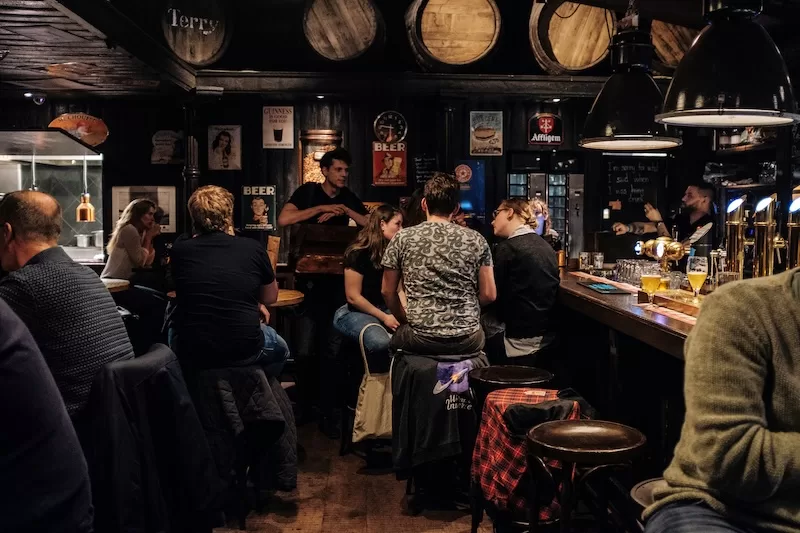
#3. Learn the History Early If You’re Moving to Ireland
Ireland’s history is tragic and intense. After 800 years of British colonial rule—including massacres like the 1649 Siege of Drogheda—native Irish Catholics faced systemic oppression. The 17th- and 18th-century Penal Laws barred Catholics from owning land, redistributing estates to British and Anglo-Irish elites.
Catholic tenant farmers were left poor, subsisting on potatoes—setting the stage for disaster during the 19th-century Great Famine. With the arrival of potato blight and little support from landlords or the British government, many starved or boarded “coffin ships” to North America. Ireland lost at least a quarter of its population.
Then came the 1916 Easter Rising, and by the 1920s, Ireland had split, eventually forming the Irish Free State. Full independence came in 1949, though Northern Ireland’s sectarian strife continued until the Good Friday Agreement of 1998.
Understanding Irish history helps avoid unintentional insensitivity. Sites like Kilmainham Gaol, the GPO in Dublin, and the National Famine Museum are essential stops for any new resident. Visit early, and when you think you’ve grasped it all, head to Northern Ireland and start again.
#4. The Front Door Is in Dublin A Tip for Moving to Ireland
Whether you’re heading off on vacation or flying home for the holidays, expect to go through Dublin. Sure, Galway and Cork have airports, but options are limited. Avoiding the capital? You’ll likely pay more and have fewer flights to choose from.
Most travelers end up on a bus, train, or driving into Dublin. It’s Ireland’s front door—and whether you love it or not, you’ll come to know it well.

#5. You Might Need a Car When Moving to Ireland
If you’re living in the heart of Dublin, Cork, or Galway, public transport and good walking shoes will suffice. But if you’re moving somewhere semi-rural or plan to explore widely, a car is a smart investment.
While regional buses are budget-friendly, they’re limited in routes and timing. If you’re without a car, be ready to problem-solve and adapt your schedule.

#6. Healthcare Is Free… Kind Of
Ireland has both public and private healthcare. Where possible, avoid private care—it’s expensive. Public healthcare, while not universally free, is mostly covered for eligible residents.
According to Citizens Information, expats qualify for free or subsidized healthcare if they’re:
- UK citizens
- EU citizens (with a European Health Insurance Card)
- Non-EU citizens legally residing in Ireland for a year or more
- Students staying for at least one academic year
Eligibility for full public coverage is means-tested, and many receive medical cards or GP visit cards. Prescription costs are partly covered, though you’ll usually pay a few euros.
7. Try to Learn Some Gaelic Before Moving to Ireland
Sadly, Gaelic is no longer Ireland’s primary language—it was declared severely endangered in 2021. British colonialism and the famine contributed to its decline, but there’s a growing movement to revive it.
There’s hope. Irish students are learning Gaelic in schools, and in 2023, the Gaelic-language film The Quiet Girl earned an Oscar nomination. Even Duolingo has added Irish to its app.
As Gaelic regains popularity, even learning a few words can show support for cultural preservation. Try these:
- Hello — Dia dhuit (dee-uh gwit)
- Thank you — Go raibh maith agat (guh rev mah ag-ut)
- Goodbye — Slán (slawn)
- Cheers — Sláinte (slawnche)
Need extra motivation? A Galway café, Plámás, offers discounts if you order in Gaelic.
#8. Property Prices Can Be Steep
Don’t be fooled by charming (if slightly crumbling) country cottages. In cities, property prices climb fast. Remote workers may find bargains in the countryside, but if you prefer urban living, prepare to budget accordingly.
The northwest is the most affordable region, with homes under €200,000. County Leitrim and County Donegal are the cheapest areas. On the east coast, expect €400,000 near Dublin—or €600,000 within the city itself.
Read more like this: Renting vs. Buying Abroad
#9. Don’t Drink in Temple Bar (Too Often)
Temple Bar is a guilty pleasure. The red-painted pub, glowing with lights on a cobbled street by the River Liffey, is postcard-perfect. Inside, you’ll find stone floors, lively drinkers, and beer-barrel tables. It’s iconic—and expensive.
As a resident, though, frequenting Temple Bar will drain your budget fast. I once paid €10 for a single pint. So here’s the deal: don’t make it your go-to. Save it for special occasions or visitors. For everyday drinks, try Slattery’s, The Celt, O’Donoghue’s Bar, or The Dame Tavern—all with great vibes and live music. Go exploring. Dublin’s pub scene is full of surprises.

#10. Irish Passports Are Worth Their Weight in Gold
If you’re pursuing Irish citizenship, know that the passport is a treasure. Heard of Foreign Birth Registration? It’s the easiest route. If you have a grandparent born in Ireland—or a parent with an Irish passport—you may already qualify.
Registering is relatively simple. Once on the Foreign Births Register, just apply for your passport. You’ll gain EU freedom of movement, which the neighboring UK no longer enjoys. It’s essentially a golden ticket—and it extends to your children. In short, don’t delay. Speaking of which, I really need to dust off my own approval documents and apply already.

The Irish Remedy
Relocating abroad is always a whirlwind of emotion. But beneath the blustery mornings and persistent drizzle, Ireland offers something special. The warmth, the culture, the music—there’s a sense of magic here. I might be biased, but Ireland always invigorates me. In every difficult phase—be it a breakup or post-Australia blues—I’ve found myself returning to its shores.
From its rich history to its soul-stirring landscapes, Ireland offers more than just a home—it offers healing. A place where you can start again, find your footing, and feel at ease. Come and see for yourself.
Read more like this: Steps to a Successful Move Abroad
Stay Ahead on Every Adventure!
Stay updated with the latest travel news on Escape Artist. Get all the travel news, international destinations, expat living, moving abroad, Lifestyle Tips, and digital nomad opportunities. Your next journey starts here—don’t miss a moment! Subscribe Now!
If you’re thinking about moving abroad and are looking for information about asset protection, cross-border transactions, second citizenship programs, or global investment, contact Joel Nagel and Nagel Law.
————————————-
Eibhlis Gale-Coleman is a travel writer from the UK. She has an ever-growing bucket list of “everywhere” and took her first solo trip abroad at 16 to volunteer in marine conservation.
